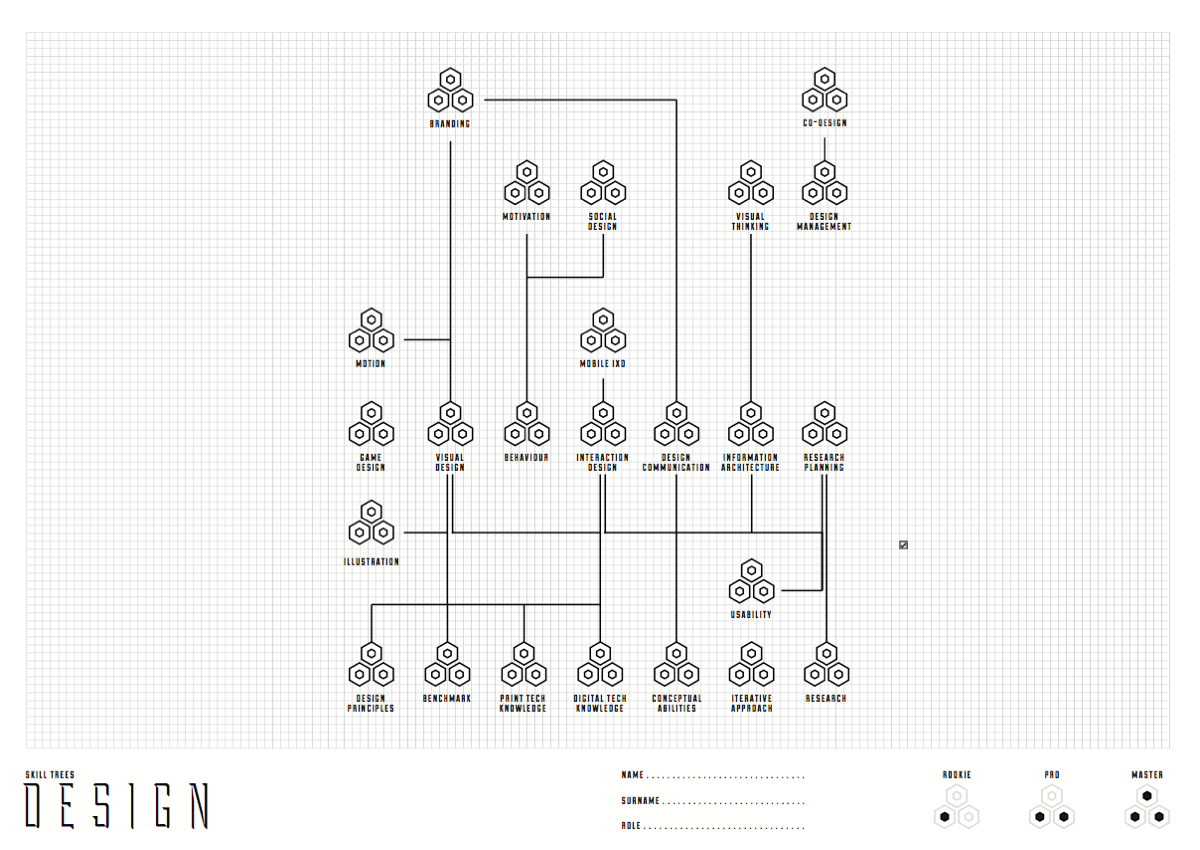We all understand well the idea of a normal educational curricula: a series of classes that combined together lead to some form of degree, all marked by specific explicit checks and markers. While the specific of this educational approach are worth a review, there are aspects of this approach that are sound:
- clear markers of progress
- shared understanding of the basic level of knowledge of an individual
I want to be especially clear on the “basic” adjective: pure knowledge and evaluations are always partial, and contextual. One’s worthiness can’t be reduced to individual points and metrics, but at the same time such points and metrics can be useful, so in a well balanced context we can understand and push this forward properly.
However the linear approach has big limitation, especially in erasing individual interests and skills. Usually the way to solve this is to have systems that ensure a combination of some foundational teachings to create a shared understanding, and then build up more specialistic teachings ot maximize the individual abilities.
Borrowing from game design
Good games are hard because they have to walk the thin line between complexity, entertainment and simplicity. Lots of work is put in creating game mechanics that are simple to understand, and build up to complex things, with a lot of things to learn and memorize, in a way that is clear and shows clear progress.
One idea we can borrow from game design that works really well is the one of skill trees, popularized by Diablo 2 in 2000, and by many games after it. The concept is that characters can level up by assigning points to individual skills, and reaching certain skills enable the player to pick up related skills.

These skills can be connected and interrelated in trees, that build up in incremental steps.
This concept can be applied to professional growth inside a company.
Skill trees

Skill trees are maps where each profession or role defines a set of abilities that are meaningful and sort them out by increased skill level and refinement, interconnecting them when one is a prerequisite for another.
For example, these are four trees that I created in one of the companies I worked for:
- Soft skills
- Design
- Development
- Consultancy
People and skill trees
These trees can be made very formal, with tests to assess the level of each of the skills and specific courses to progress. However, I’d advise to not be strict about the process, as these should be tool for growth and learning, not to rank and assess people. Each company has to find its own balance.
These trees can be thus used in two very simple ways:
- As a way to self assess
- As a way to provide guidelines on where to grow next
Similarly, I think measurement should be kept loose, and not even compared across different employees. The best scenario is where each person has its own, self-assessed, and they routinely check every quarter or year wheer they want to grow, ideally with a person that can support them, being their manager, a person from HR or someone specifically tasked for that inside the company.
No generic skill tree
Since each tree is tailored for the company and not generic, any progress is progress that’s useful to the growth of the business as well. There shouldn’t be skills inside that are outside the ones that are directly useful, however, there might be certain ones that can be partially useful or as a way to build up capability for the future.
The skill trees are thus created at the intersection of:
- the company business needs and specific industry
- the desire of people to grow into better professionals
As a counter example, I don’t think a generic “UX designer” skill tree should exist, even in an utopia where we can all agree on such a tree. A designer in a healthcare company will have surely the same core of abilities of a designer in mobile games, however there are a lot of other pieces that diverge.
Make your skill tree
Do you want to try this approach yourself, in your team or in your business? Read further to this getting started article detailing how to create them.
Thanks to Giulio Martinelli for the skill tree design example above.